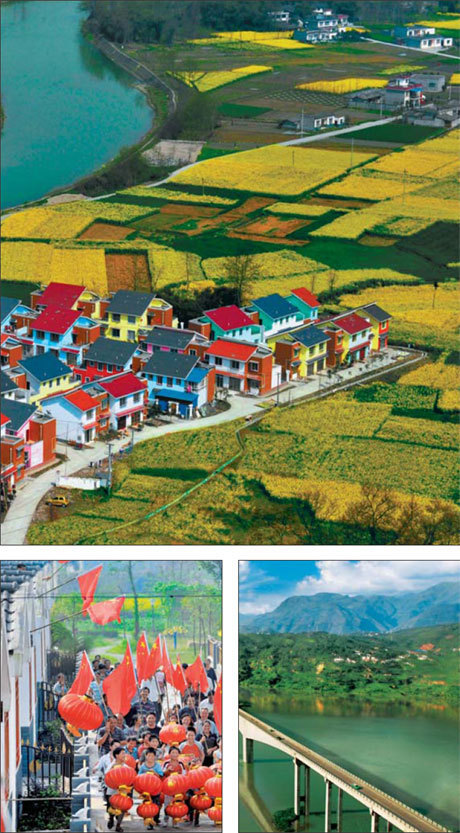When Sichuan shook
Updated: 2012-06-19 07:49
By Mei Jia (China Daily)
|
|||||||||||
Victor Lu, editor with McGraw-Hill, says he saw many pictures of the disaster on news reports but was still touched by the new albums because "they delve deep into details that were left unseen".
"The books show photos of the affected families supporting each other and people whose houses were destroyed helping reconstruct neighbors' houses," Lu says.
Liu Zhouyuan, chief editor of Sichuan People's Publishing House, affiliated to Xinhua Winshare, is the Chinese publisher.
Liu believes the two books provide a unique view, with exclusive details and images unavailable on the Internet and in other media. The two books' 500 photos were carefully selected from 4,000.
"Months after the editing, I'm still easily excited by a look at the photos included," Liu says.
What excited Liu most are the bird's-eye views of the new homes and schools built in the affected areas. The Rebirth of Our Land features 30 aerial photos taken three to four years after the disaster.
"It's really dramatically changed and is in sharp contrast to the devastating images of the first album," Liu says.
The earthquake razed counties like Wenchuan and Beichuan to the ground.
The reconstruction included the rebuilding of 1.5 million rural houses and 250,000 urban houses, solving the housing problem of more than 5.3 million families and providing shelter for more than 12 million people.
"The colorful new houses in ethnic Qiang areas are in the mountains and along the rivers," Liu says. "Some residents say their living standards have been improved by 20 to 30 years."
He believes the earthquake led to huge concern and help from home and abroad because it was such a destructive disaster in a highly populated area.
"We want to provide an answer to people worldwide who assisted us," he says.
Liu says the united efforts of the people and the government was key to all the improvements.
"Reacting to a disaster of this scale, the government showed resolution and support, and encouraged the people greatly," he says.
|
Clockwise from top: Rows of new houses rise above fields of blooming rapeseed flowers in Dujiangyan; The new Dashu Bridge in Hanyuan county; Residents move into new houses during the National Day holiday in 2009. |
Sichuanese people's ability to adapt to hardship, while maintaining an optimistic outlook, has been tested before and proved true again, he adds.
"More now than never, there's a growing market for information created in China that can be adapted to the rest of the world," Ruppel says. "And it suits our mission of spreading knowledge and learning that extends to sharing the wisdom of culture. The story about the Wenchuan earthquake is a story that we have to tell to meet the current thirst for information on contemporary China."
To appeal to Western readers, the publishers changed the wording, layout, covers and titles of the two albums, and added detailed geographic information.
Contact the writer at meijia@chinadaily.com.cn.
Today's Top News
Rescuers race against time for quake victims
Telecom workers restore links
Coal mine blast kills 18 in Jilin
Intl scholarship puts China on the map
More bird flu patients discharged
Gold loses sheen, but still a safe bet
US 'turns blind eye to human rights'
Telecom workers restore links
Hot Topics
Lunar probe , China growth forecasts, Emission rules get tougher, China seen through 'colored lens', International board,
Editor's Picks

|

|

|

|

|

|






